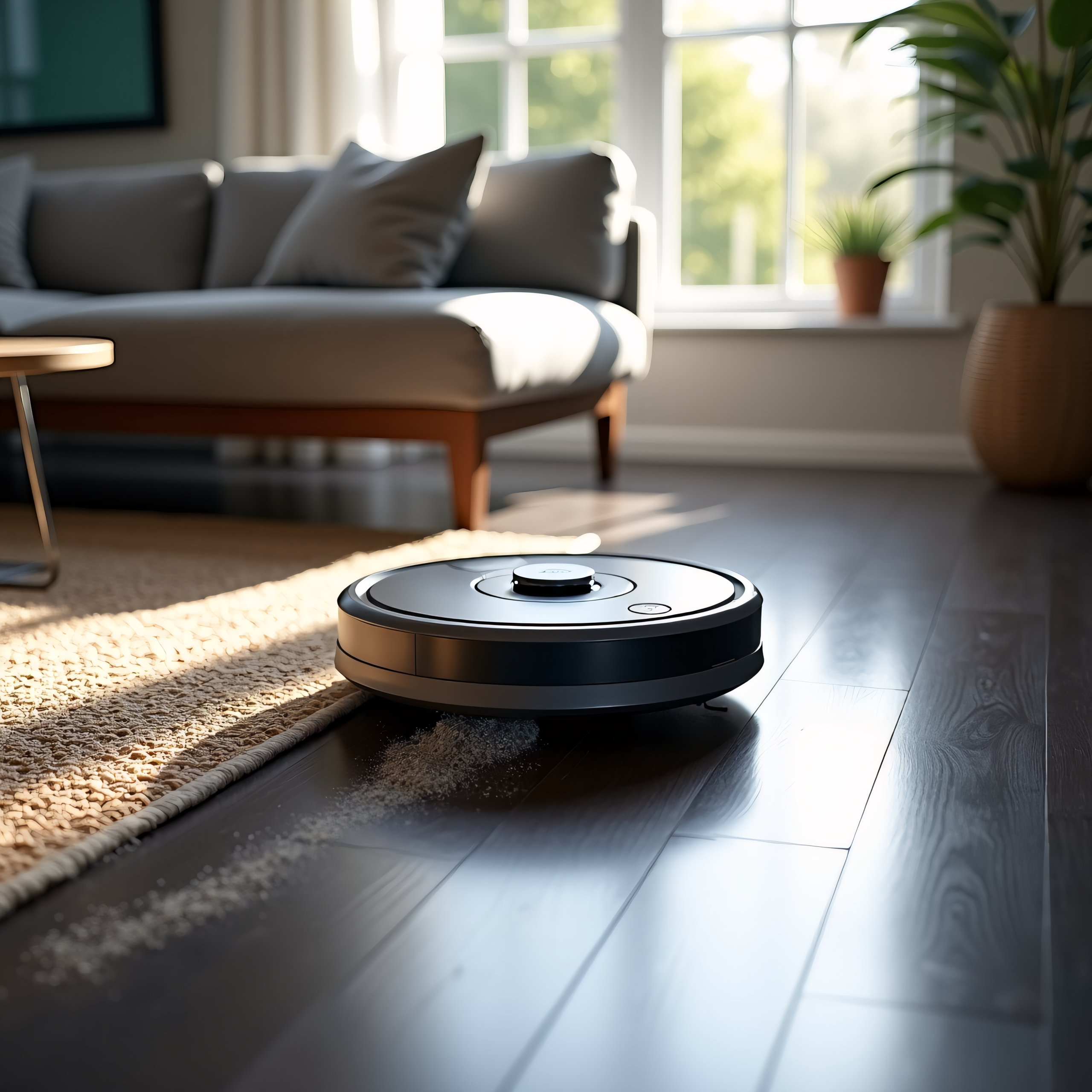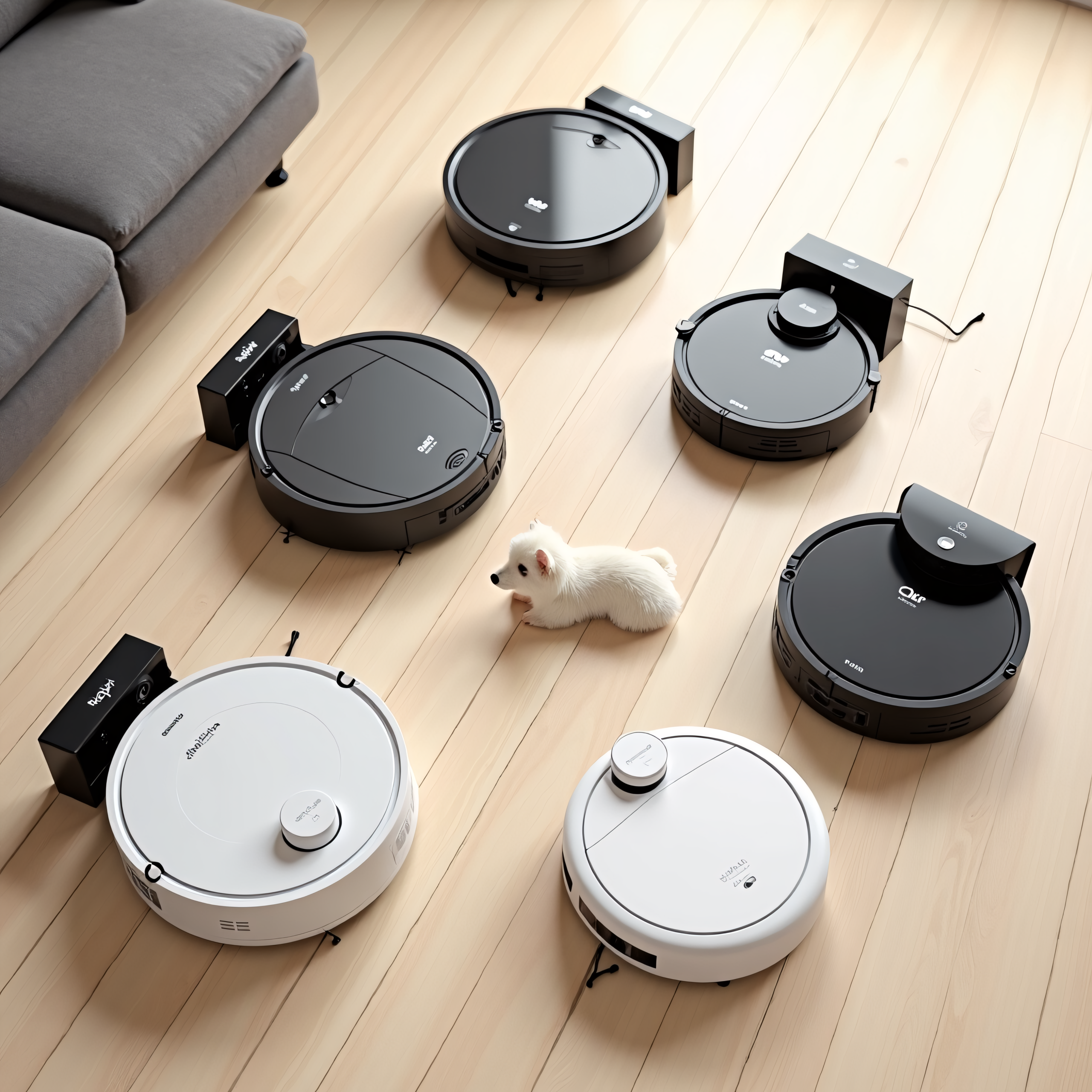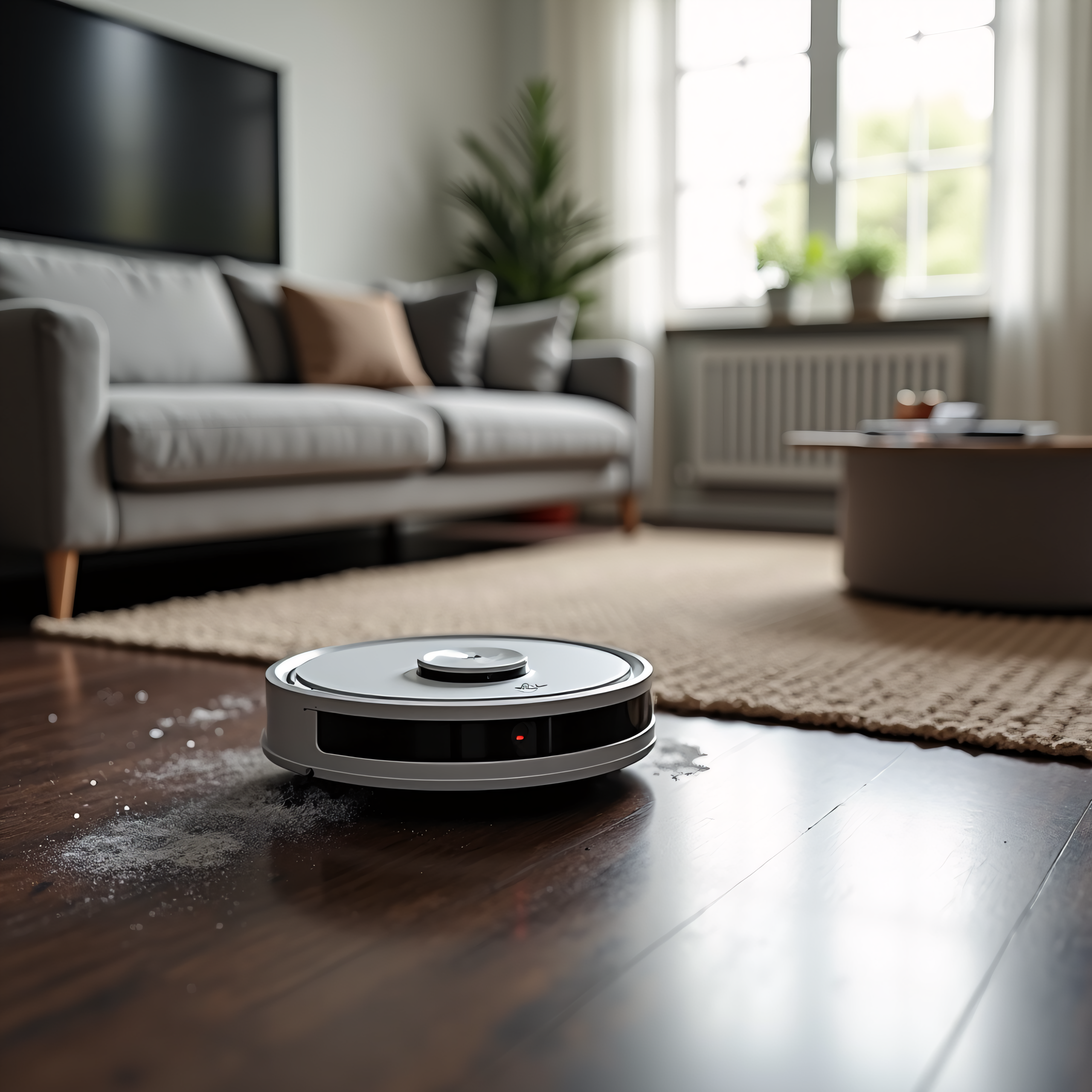Understanding Robot Vacuum Technology
At the heart of every automatic vacuum cleaner is a suite of technologies designed to mimic (and, in some cases, surpass) the cleaning capabilities of traditional vacuums. Let’s break down the core components:
The way a robot vacuum moves around your home is crucial for efficient cleaning. Here are the common types:
- Random Bounce: Older, simpler models use a truly random pattern, bouncing off obstacles. These are less efficient but often the most affordable.
- Gyroscope Navigation: Uses sensors to track direction and provides a more systematic approach than random bounce but can still be prone to errors.
- Visual SLAM (Simultaneous Localization and Mapping): Utilizes a camera and computer vision to “see” and map the room, creating a more accurate cleaning path.
- LiDAR (Light Detection and Ranging): The most advanced system, using laser to create a detailed 3D map of your home. LiDAR allows for precise navigation, virtual walls, and even multi-floor mapping.
More on blog:
Roomba Mapping: A Model-by-Model Guide to Navigation & Smart Features
Suction Power
Measured in Pascals (Pa), suction power determines how effectively a robotic vacuum lifts dirt, dust, and debris. Higher Pa ratings generally mean better cleaning performance, especially on carpets. Look for models with at least 1500Pa for general cleaning, and 2000Pa or higher for homes with pets or thick carpets.
Mopping Systems
Many modern floor cleaning robots now offer mopping functionality. These systems typically involve a water tank and a microfiber pad. Some models offer adjustable water flow, while others vibrate or rotate the mop head for enhanced scrubbing action.
More on blog: Robotic Vacuums & Mops Buyer’s Guide: Find the Best Model for Your Home
Smart Features
- Wi-Fi Connectivity: Allows control via a smartphone app, scheduling, and integration with voice assistants like Amazon Alexa and Google Assistant.
- Zone Cleaning: Allows you to designate specific areas for cleaning, ideal for high-traffic zones.
- No-Go Zones/Virtual Walls: Prevents the robot from entering restricted areas, such as around pet bowls or delicate furniture.
- Self-Emptying Base: A convenient feature that automatically empties the dustbin into a larger container, reducing maintenance.
More on blog: Smart Cleaning
Top Robot Vacuum Brands: A Quick Overview
Several brands dominate the robot vacuum market. Here’s a brief look at some key players:
- Roborock: Known for their powerful suction, advanced navigation (especially LiDAR), and excellent app integration. Often considered a premium brand.
- 360: Offers a wide range of models, from budget-friendly options to more sophisticated devices with advanced features.
- Coredy: A popular choice for affordable and reliable automatic vacuums. Great for smaller homes and basic cleaning needs.
- OKP: Focuses on providing good value for money with a range of features at competitive prices.
- Sysperl: Offers a selection of robot vacuum cleaners with a focus on convenience and ease of use.
- VR One: Caters to the mid-range market with devices offering a balance between features and affordability.
More on blog:
The Ultimate Guide to Robot Vacuums: iRobot Roomba i7+, j7+, and Roborock S7 Compared
Robot Vacuum Price Points: What to Expect
The cost of a robot vacuum can vary widely. Here’s a general breakdown:
Budget-Friendly Robot Vacuums (Under $300)
These models typically offer basic features like random bounce navigation and moderate suction power. They’re a good starting point for small apartments or those new to robotic cleaning. Expect to sacrifice features like smart mapping and self-emptying.
Mid-Range Robot Vacuums ($300 – $700)
This category offers a sweet spot between price and performance. You’ll find models with gyroscope or visual SLAM navigation, stronger suction, and app connectivity. This is a solid choice for most homes.
High-End Robot Vacuums ($700+)
These robot home cleaners boast top-of-the-line features like LiDAR navigation, self-emptying bases, advanced mopping systems, and multi-floor mapping. They’re ideal for larger homes, pet owners, and those who want a truly hands-free cleaning experience.
Key Features to Consider
When selecting a robotic floor cleaner, consider these key factors:
- Floor Type: Different robots are optimized for different floor types (hardwood, carpet, tile).
- Pet Ownership: If you have pets, look for models with strong suction, tangle-free brush rolls, and large dustbins.
- Home Size: Larger homes benefit from robots with longer battery life and advanced navigation.
- Smart Home Integration: If you already use a smart home ecosystem, choose a robot that’s compatible.
- Dustbin Capacity: Consider how often you want to empty the dustbin.
- Filter Type: HEPA filters are recommended for allergy sufferers.
More on blog: Conquering the Clean: Finding the Right Vacuum for Your Home
Maintenance and Troubleshooting
Regular maintenance will extend the life of your robot vacuum. Empty the dustbin after each use. Clean the brushes regularly to remove hair and debris. Check and clean the sensors to ensure accurate navigation. Filters may need replacing every few months.
Robot Vacuum FAQs
Q: What’s the difference between a robot vacuum and a traditional vacuum?
Robot vacuums offer convenience and automated cleaning. Unlike traditional vacuums requiring manual operation, robot vacuums navigate your floors independently, often scheduled via a smartphone app. While generally less powerful for deep cleaning, they excel at daily maintenance and keeping floors consistently tidy, reducing the need for frequent, full-house vacuuming. Consider a robot vacuum for effortless cleaning!
Q: How much do robot vacuums cost, and are more expensive models worth it?
Robot vacuum prices vary widely, from under $200 for basic models to over $1000 for premium options. Higher-priced vacuums often include features like smart mapping, self-emptying bases, and advanced navigation (LiDAR). While a budget model is great for small spaces, investing in a more expensive robot vacuum can be worthwhile for larger homes or those seeking truly hands-free cleaning.
Q: What features should I look for in a robot vacuum?
Key features include suction power (measured in Pascals – Pa), battery life, and navigation technology. Wi-Fi connectivity allows app control and scheduling. Virtual walls or no-go zones prevent cleaning in restricted areas. HEPA filters are crucial for allergy sufferers. Consider your floor types – some robots are better suited for hardwood floors while others excel on carpets.
Q: How often do I need to maintain a robot vacuum?
Regular robot vacuum maintenance is essential. Empty the dustbin after each use (or more frequently with pets!). Clean the brushes regularly to remove hair and debris. Check and clean the sensors to ensure accurate navigation. Depending on the model, filters may need replacing every few months. Proper maintenance extends the lifespan of your automatic vacuum cleaner.
Q: Can robot vacuums handle pet hair effectively?
Many robot vacuums for pet hair are specifically designed to tackle fur. Look for models with strong suction power, tangle-free brush rolls, and large dustbins. Some even feature specialized pet hair modes. While no robot vacuum completely eliminates the need for occasional manual cleaning, they significantly reduce pet hair buildup and maintain a cleaner home.
Q: Are robot vacuums safe for homes with children and pets?
Most robot vacuums are equipped with sensors to avoid obstacles and prevent falls. However, it’s always best to supervise initial runs and ensure small objects are removed from the floor. While generally safe, it’s important to teach children to respect the robot’s space and avoid interfering with its operation.
Conclusion: Embracing the Future of Clean
We’ve journeyed through the world of robot vacuums, from understanding the core technology that powers these automated cleaners to dissecting the offerings from leading brands like Roborock, 360, Coredy, OKP, Sysperl, and VR One. We explored models across a spectrum of price points – from budget-friendly options delivering essential cleaning to high-end machines boasting advanced features like LiDAR navigation, self-emptying docks, and smart home integration. Ultimately, we’ve highlighted that the “best” robot vacuum isn’t a one-size-fits-all solution, but rather a device tailored to your specific needs, floor types, and lifestyle.
Whether you’re tackling pet hair, hardwood floors, or a multi-level home, a robot vacuum can significantly simplify your cleaning routine. Remember to consider factors like suction power, battery life, and app compatibility when making your decision, and don’t underestimate the importance of regular maintenance to maximize your robot’s lifespan.



